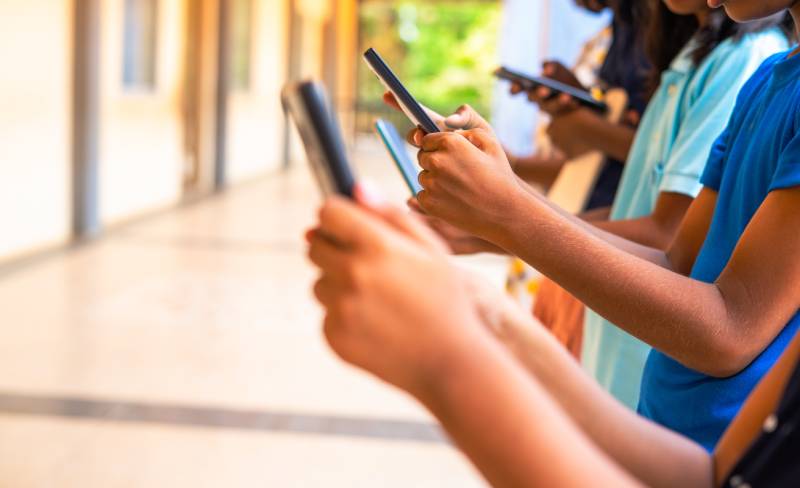Last year, Roosevelt Middle School in San Francisco, California introduced a campus-wide cellphone and smartphone ban. That meant devices are “off and away at all times while you’re on campus,” said Emily Leicham, Roosevelt Middle School’s principal. Among those in favor of the policy was Marta Lindsey, whose child started sixth grade at Roosevelt in fall 2024. She said that the phone policy was the reason her family chose the school as their first pick in the district’s lottery system. “I just feel super lucky that we got into this school…I don’t even care about anything else about this school except for this policy,” she said.
Cellphone bans aren’t new to K-12 schools across the nation, but the past year has seen growing momentum for district and statewide bans. In a Pew Research survey, nearly three quarters of high school teachers and a third of middle school teachers said that cellphones are a major distraction in the classroom. In media appearances related to his bestselling book, Anxious Generation, social psychologist Jonathan Haidt has called for phone-free schools, and seven states have banned or restricted cellphone use in schools for the 2024-25 school year.
However, not everyone is enthusiastic about cellphone and electronics bans in middle schools. Richard Culatta, CEO of the International Society for Technology in Education (ISTE), and Tanner Higgin, a senior educational technology researcher at WestEd, support a more nuanced approach to technology use in schools. Instead of a permanent ban on cellphones, Culatta and Higgin suggested that schools teach digital citizenship and develop technology policies that foster healthy electronic use among students.
Implementing a cellphone ban
At Roosevelt Middle School, the policy worked immediately, according to Leicham. She said she confiscated 40 to 50 phones, airpods and smartwatches on the first day of the cellphone ban in 2023. The second day, she only confiscated two devices. The new system and school policy took years to develop, with parents initiating the conversation during Leicham’s first year as principal in the 2021-22 school year. While parents drove a lot of the interest in a cellphone free school campus, Leicham made sure to include students and teachers in the conversation. Students were given the opportunity to discuss the potential of a cellphone policy during their advisory periods, and teachers had ongoing conversations during staff meetings about their concerns and anticipated challenges, said Leicham.
This year, Roosevelt expanded the policy to cover all electronics, including Google Chromebooks when not directly in use in a classroom. Additionally, the policy allows no room for warnings. Once a student’s electronic is spotted by a teacher or administrator, it is placed in the front office for the day. Students collect confiscated phones after school. This eliminates power struggles between teachers and students, according to Leicham.


